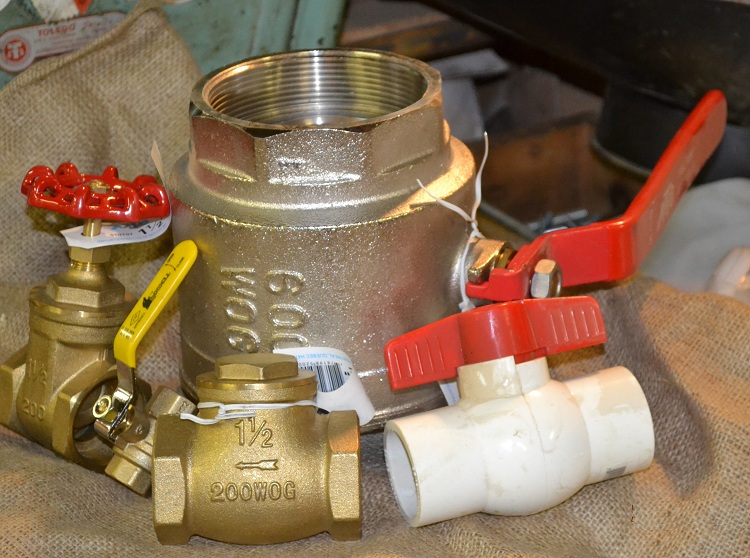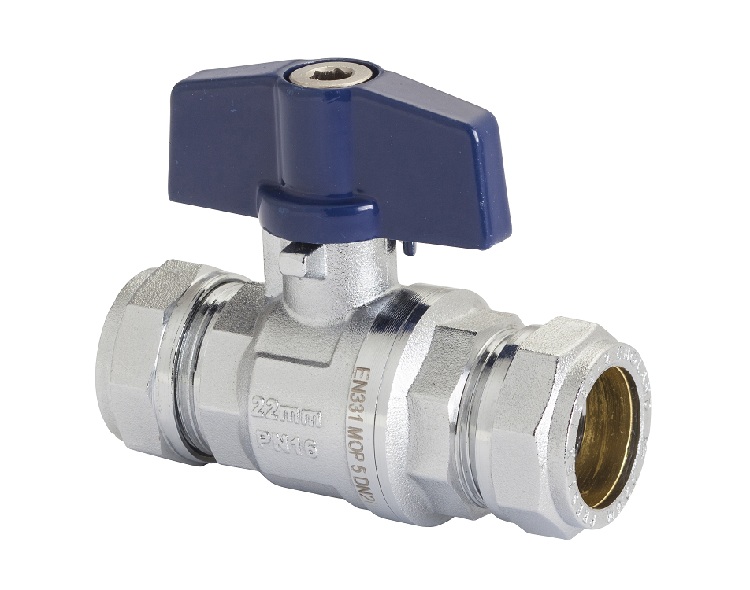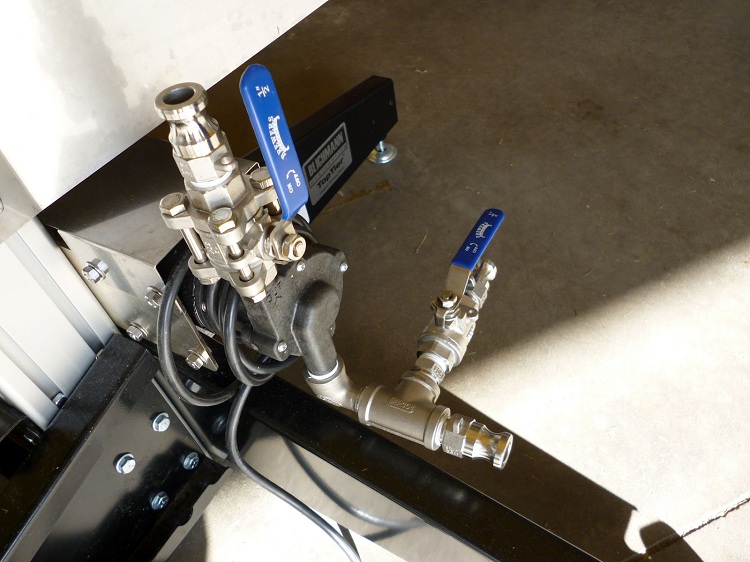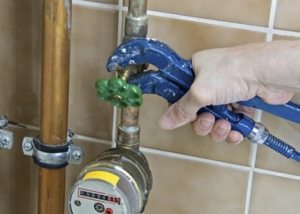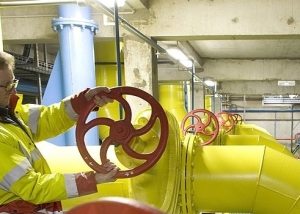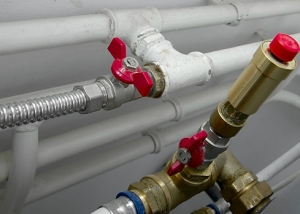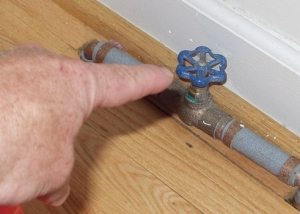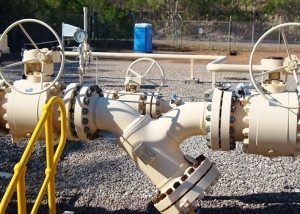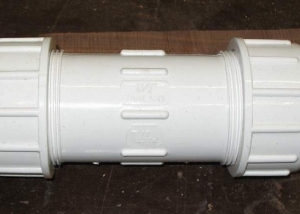Ball valves are devices that are a type of stop valve and include a movable structural element in the form of a ball. Depending on the design features, ball valves are subdivided into full bore and partial bore. Full bore ball valves are used, as a rule, in communications, which are equipped with diagnostic and cleaning devices.
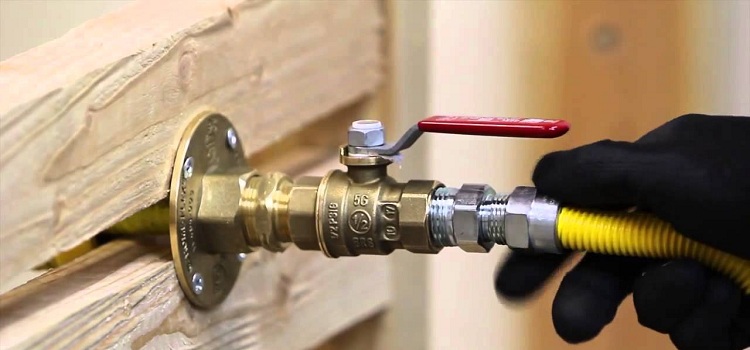
Full bore ball valves are used as stop valves in highways of different types and with different types of working environment
Content
Differences from Partial Bores and Scope of Use
Full bore devices have a hole in the ball element through which the communication medium passes. The dimensions of the through hole in such devices are most often equal to the valve cross section or as close as possible to it. The dimensions of the through hole are also called the effective diameter. Thus, the valve with the designation DN 50 will have a hole in the ball element, the diameter of which is 50 mm.
Such a design of a full bore valve significantly increases its throughput compared with incomplete bore counterparts. Another important indicator that affects the choice of mixer for installation is the coefficient of hydraulic resistance. For full bore devices, this ratio is lower than for non-full bore devices, which is an advantage. Due to their advantages, full bore devices are more attractive, however, from a financial point of view, they are less profitable.
Helpful information! The service life of such valves increases due to the reduced impact on the shut-off element. It is recommended to purchase full bore devices if a valve is needed for a long period of use. In turn, part-time devices wear out faster, so they should be used to save money.
Such products are used in the following pipeline structures:
- water pipes;
- gas and oil pipelines;
- steam lines;
- heating network;
- technical pipelines in production.
Varieties of full bore ball valves
The full-bore ball locking valve can have various configurations and differ in the material of manufacture, mounting option, type of actuator, as well as in the shape of the handle with which the valve is adjusted during operation. Products have a wide range of sizes.
Full bore valves are made of different metal alloys. Consider the main ones:
- brass;
- bronze;
- stainless steel;
- carbon steel.
Depending on the design differences, the necessary option for mounting the product on the pipeline is selected. To date, there are 4 basic configurations of full bore devices:
- Coupling. Such products are threaded and used mainly in urban water utilities.The thread in such devices can be of two types, depending on the shape: cylindrical and conical.
- Flanged. Full-bore flanged ball valves are used for communications that are large in size. The main advantage of these products is that they are quick-detachable. A flange valve is also used if welding in a room that contains communication is prohibited. The flange valve is convenient and is used mainly in manufacturing plants.
- Combined. The main advantage of such devices is versatility. Combined models are used in various pipelines and can be equipped with a flange at the same time on the one hand, and on the other, with threads. Other combinations are possible.
- Welded. Such devices are mounted on the pipeline structure by welding and are used if it is necessary to create a strong connection at a critical or inaccessible point in the system.
The mechanism of full bore ball valves is driven by a drive. Such devices can be equipped with the following types of drives:
- hydraulic;
- electric;
- pneumatic.
The rotary handle of such devices can be made in two variations:
- butterfly;
- lever arm.
Characteristics of ball full bore valves and their advantages
Today, such valves are quite popular and widely distributed in various fields of human activity. Full bore valves, as mentioned above, have a wide range of sizes. The conditional cross section (DN) of such products ranges from 15 mm to 1500 mm. The pressure that such a valve can withstand reaches 4 MPa.
Note! Models that differ in large dimensions (more than 300 mm) must be equipped with special supporting elements necessary to maintain the integrity of the structure.
Characteristics of full bore valves are presented in table No. 1.
Table 1
| Mm | Minimum operating temperature, ° C | Maximum working temperature, ° C | Pressure, MPa |
| From 15 to 1500 | -40 | +200 | 1.6 to 4.0 |
Like any other product, such cranes have many advantages. Consider the main advantages of using such products:
- simplicity of design, which provides ease of installation of the crane on the pipeline communication;
- high strength characteristics, due to which such products are reliable;
- long service life of products;
- lack of stagnant zones;
- resistance to various environments (including aggressive);
- high throughput, ensuring the passage of 90-100% of the working environment.
Full bore filter taps
A ball valve with a purification filter is a device that belongs to the combined type of shut-off devices and is used on various pipelines (mainly water supply systems). In this case, the main production material is brass, on which an additional layer of nickel can be applied. A nickel layer is necessary to increase the anticorrosive properties of the valve.
In turn, the filter element represented by the mesh, as a rule, is made of stainless steel. Stainless steel does not need additional protection, as it is itself a corrosion resistant material.
Such products have a long service life and are resistant to temperature fluctuations. Resistance to temperature fluctuations is achieved due to the fact that all valve elements are made of durable and reliable materials.In addition, it is worth noting the environmental qualities of such a locking device.
Ball valves with a coarse filter can withstand both low and high temperatures. On average, these products are resistant to temperatures from −20 to +120 ° C, which is more than sufficient for household pipelines. The working pressure for such products reaches 4 MPa, as in conventional full bore models.
